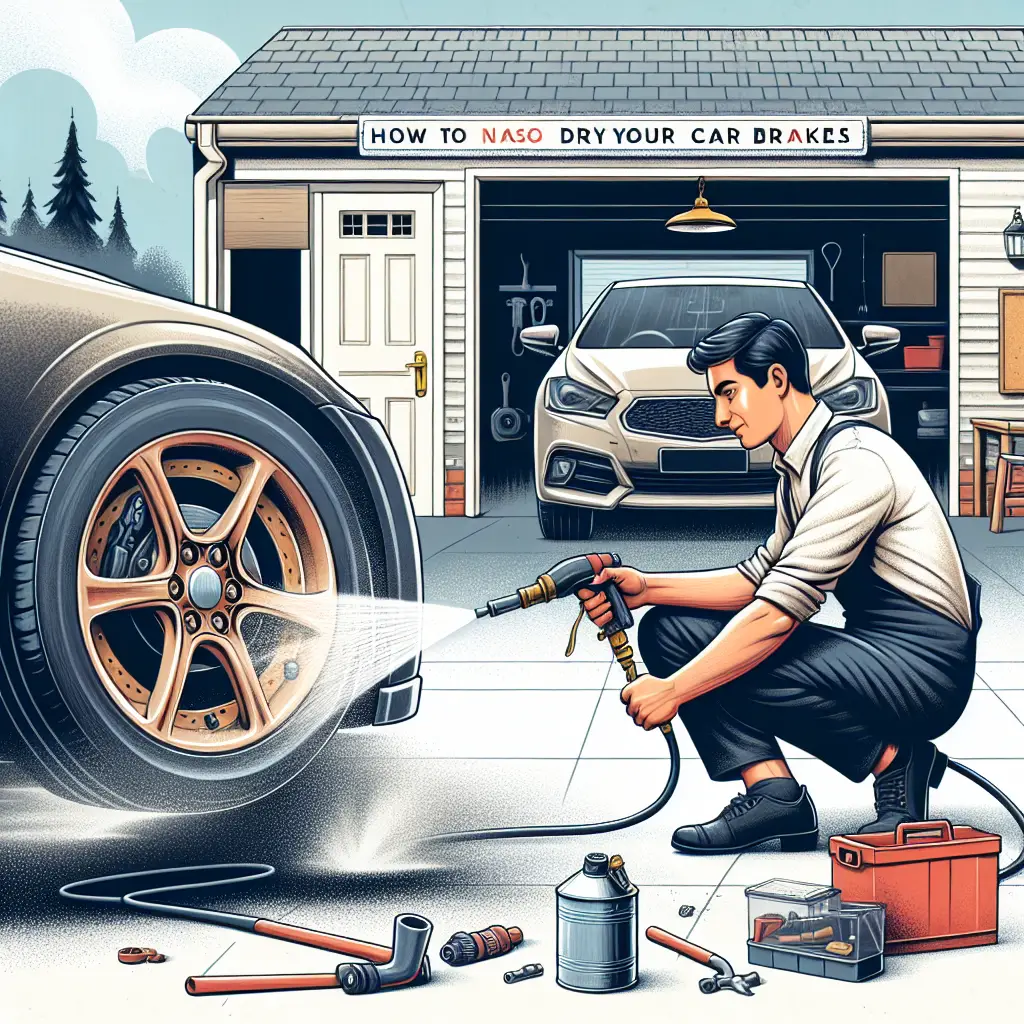How to Dry Your Car Brakes: A Comprehensive Guide
Driving through rainstorms or across waterlogged roads can introduce an array of challenges for motorists, not least of which is the impact on their vehicle’s braking system. Water can find its way onto your brake rotors and pads, impacting their effectiveness and possibly leading to longer stopping distances, or in severe cases, brake failure. Understanding how to dry your car brakes can be the difference between maintaining safe stopping capabilities and facing potential hazards on the road.
Why It’s Essential to Keep Your Brakes Dry
Before diving into the methods, it’s crucial to understand the importance of maintaining dry brakes. Water can act as a lubricant, reducing friction between your brake pads and rotors. Consequently, this diminishes your car’s stopping power. Moreover, excessive water exposure can lead to rust and corrosion, which can damage brake components over time.
Step-by-Step Instructions for Drying Your Car Brakes
1. Gradual Braking Technique
One of the simplest methods for drying your car brakes is to lightly apply your brakes while driving. This action generates heat and friction, which in turn helps to evaporate any moisture present on the brake pads and rotors. According to Edmunds, it’s advisable to apply light pressure on the brake pedal as you drive for a few minutes. Be mindful to do this in a safe area with little to no traffic, and never slam on your brakes, especially on wet surfaces.
2. Use a Dry and Warm Environment
Parking your vehicle in a warm, dry place can passively dry your brakes. A garage with good ventilation can facilitate the evaporation of moisture from the braking system. As CarCareKiosk points out, just leaving your car parked overnight in such an environment can be enough to dry out wet brakes.
3. Engage in a Few Gentle Stops
Find a safe, secluded area like an empty parking lot free of traffic and pedestrians. Accelerate to a moderate speed and apply the brakes gently to come to a complete stop. Repeating this action several times allows heat to build up in the brake system, which will help in drying off any remaining water.
4. Consider Using Compressed Air
For those who prefer a more hands-on approach or for cases where the brakes are particularly wet, compressed air can be beneficial. Use a compressed air nozzle to blow air directly onto the rotors and pads to physically remove water droplets. Ensure to wear appropriate safety equipment and direct the nozzle away from sensitive parts of the vehicle.
Preventive Measures to Keep Your Brakes Dry
1. Avoid Deep Puddles
Prevention is often the best cure. Try to circumnavigate around large puddles or waterlogged areas when it’s safe to do so. If avoidance is not possible, driving through water at a controlled, slow pace can help minimize the amount of water splashing onto the brakes.
2. Regular Brake Maintenance
Regularly scheduled maintenance of your vehicle’s braking system can ensure that each component is functioning correctly and can handle exposure to moisture more effectively. This includes checking for wear on brake pads and ensuring that brake fluid is at the proper level and not contaminated.
3. Install Quality Brake Components
Investing in high-quality brake pads and rotors can make a significant difference in both the performance and drying times of your braking system. High-quality materials are more resilient to moisture and heat, according to experts at Car and Driver.
When to Seek Professional Help
If you’ve noticed a consistent issue with wet brakes, it might be a sign of an underlying problem with your brake system. Perhaps the brake caliper is sticking, or there’s a compromised brake line that’s allowing moisture in. In such cases, a professional mechanic should inspect and repair any issues.
Safety Precautions
Safety should always be your primary concern. Whenever you experience braking difficulties, especially in wet conditions, take it seriously. If you’re unsure about your brakes’ ability to perform correctly after getting wet, it’s recommended to have your vehicle inspected by a professional mechanic immediately.
Conclusion
By understanding how to dry your car brakes and taking proactive measures to prevent them from becoming excessively wet in the first place, you can maintain optimal stopping power and prolong the life of your brake components. Follow the tips above and remember to keep your vehicle maintained to ensure your brakes remain responsive in all weather conditions.
Maintaining safe braking performance is not just about comfort but safety, too. While these tips can help you manage wet brakes, always give heed to the overall condition of your vehicle’s braking system. Keep an eye out for warning signs such as unusual noises, vibrations, or reduced braking effectiveness, and address them promptly to ensure your safety on the roads.
Note: This article is intended for educational purposes only and should not be taken as professional mechanical advice. Always consult a certified mechanic for brake-related issues.

